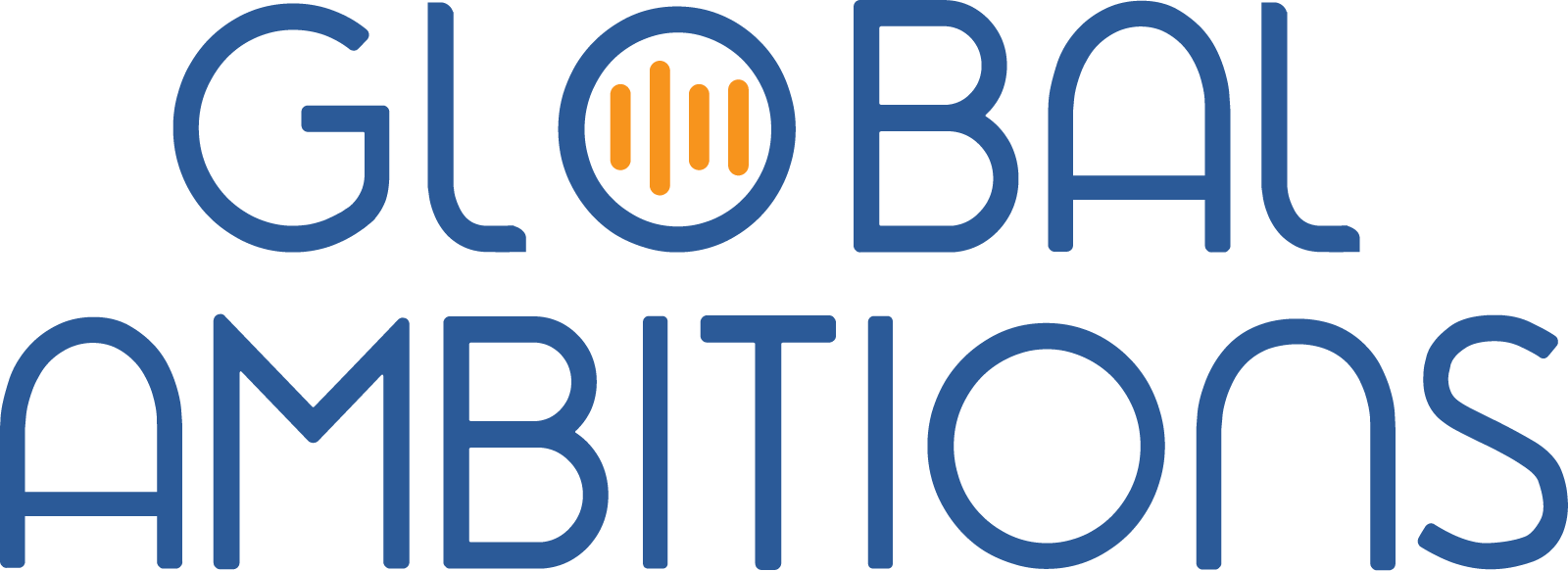With Felicitas Kermarrec, Head of Copywriting and Translation at Spread Group
Below is a full transcript of the episode
Antoine Rey
Hi, I’m Antoine Rey, and I’ll be your host today for this Global Ambitions podcast episode. And today my guest is Felicita Kermarrec, Head of Copywriting and Translation at Spread Group. And today we’re going to be talking about customer experience with international copywriting. Felicitas, welcome to the program.
Felicitas Kermarrec
Thank you, Antoine. Thanks for having me.
Antoine Rey
You want to tell us maybe a couple of minutes about your company, Spread Group, as well as your role within the organization?
Felicitas Kermarrec
Sure. So Spread Group is a family of brands, all related to print on demand. We have five brands that allow customers and businesses to create, buy, and sell customized apparel and accessories. In my role of head of Copywriting and translation, I have a team of nine people consisting of six copywriters, a localization manager, a content strategist, and a working student. And actually, yeah, we have a big team of freelancers also who support us. We’re filling all the copywriting and localization needs of the company. Yeah. And we are localized into 13 languages for most brands.
Antoine Rey
Very good. One of my first jobs, when I was 16, was printing personalized messages on t-shirts at the time for specific companies and things. So it’s great to see that has evolved into a massive multi-national business in this case. Can you tell us… So the interesting part here is that in your organization you have combined the translation and copywriting functions. So I’d like for you maybe to explain to our listeners how you’re set up and how that works within the organization and the rationale behind putting those two together.
Felicitas Kermarrec
Yes. So the team and this combination exists since 2012. Before, the content team was quite small and all copy was written in German and then localized by freelancers in all languages. And then there was a change. We decided to create, like an internal agency that was fulfilling all copywriting and localization needs for the whole company. Before, also, marketing people were writing newsletters, for example, and then we said, okay, we’ll hire a group of professionals to professionalize the copywriting, to set up brand guidelines, terminology, and to really have a very good quality. And this included to also hire English and French copywriters, because these are the most important markets for us. North America was English and UK and France.
Since then we are doing copywriting next to translation. So the smaller countries are translated and localized and this is also happening in my team, but with freelance or agencies. And for the main markets we are writing the copy.
Antoine Rey
And you guys are part of the… because usually… we’ve seen a trend like in the industry. Certainly moving from translation to pure copywriting and adaptation as well, but a lot of copywriting. But that usually belongs or falls under the marketing organization. Are you guys part of the marketing organization or customer experience or…?
Felicitas Kermarrec
Yes, exactly. I’m part of the customer experience team where we also have photography, product set up, and design. And yeah, the marketing departments are working on themselves and are using my department like a creative agency. So it’s completely centralized, all copywriting tasks.
Antoine Rey
So you’re providing a service to that marketing team instead of them going externally?
Felicitas Kermarrec
Exactly.
Antoine Rey
All right. Good. Interesting to have that centralized, though, within the organization, because usually then marketing would have a tendency to work, like with local agencies in the market. So in this case, are there campaigns that you are driving globally versus campaigns that you’re driving locally?
Felicitas Kermarrec
Yes, they are. Actually, most campaigns are driven for all markets we serve. But as there is focus on English, French, and German here, we do a bit more, we have more communication that we send out. There’s more budget flowing there. And yeah, we try to push these markets. So yes, sometimes we are only creating copy for these three main markets. But for important campaigns that are always coming, Valentines Day, Christmas, Easter, stuff like this, it’s always for all countries. And then for very specific things we do localized marketing also for smaller countries sometimes. For example, in the Netherlands, you have the Kings Day, Koningsdag, that we are doing special campaigns. So we look at what is happening in our countries and where can we do nice targeted marketing.
Antoine Rey
Yeah. And it’s decided on, I would say on a strategic level. Because what we’ve observed as well a lot is that you have still a kind of centralized marketing function that will run some global campaigns. And sometimes they say like, Oh yeah, we’ve localized that campaign. And for instance, they’re going to talk about basketball. And guess what? Basketball is going to be great in the States or in Japan, but maybe not as relevant in Germany or in France, where you’d be better off talking about a different sport, I guess. So do you still see a disconnect sometimes between that central team and the localization effort versus a kind of a requirement for local created content?
Felicitas Kermarrec
Yeah, of course. I mean, we could do things even better. There’s always room to improve. I think we already have a good eye on what is important in the different countries. The marketing teams pay attention to that and then I have my team to also give input. If we see that something is not fitting, our translators also give us feedback if sometimes something is not relevant for their market. So I think we influence each other and working like correctives for each other to learn and set up good marketing strategies that fit all markets. But of course, yeah, it’s a constant process of improving and really testing and finding out what is relevant to the different markets.
Antoine Rey
And then… so is there a way or do you have like a process for how to track the impact of what you’re doing in translation versus maybe local copywriting, you know, in terms of traffic it’s going to generate on your website and interest for your services and products?
Felicitas Kermarrec
It’s always hard to find out which impact the copy, the pure copy has. Of course, we are analyzing the results and the performance of the copy and pieces of content we create. I had a look into our newsletters. That was interesting because for example, the French newsletters are copywritten, but other newsletters are only localized and others are only sent in English language to not English native language speaking people. So here we can see that it’s really beneficial to localize the newsletters.
If let’s say, a Spanish person receives an English newsletter, there will be less respondents than to a Spanish newsletter. But we don’t see any difference between a copywritten or a localized newsletter because there are so many factors that are important. It also depends on the situation of the market, for example, or the frequency, how often you send out newsletters. So we can’t see that copywriting newsletters works better, for example, but we can see that localized newsletters work better compared to just English for example. Right?
Antoine Rey
Okay. Yeah.
Felicitas Kermarrec
And then yeah. It’s always hard to measure. I mean, this is something I always try to do. Find out if copy really makes a difference. We sometimes do a testing so we can find out which wordings were better, but it’s hard to test copywritten versus localized copy because you never know why something performs better or not so well, actually.
Antoine Rey
And so what drives the decision to go copywriting versus translation? Because I presume copywriting is going to be more expensive than translation in this case.
Felicitas Kermarrec
Not really. Actually, on those markets where we do copywriting, we also have a bigger revenue. So the efficiency ratio is actually often better even than for just localized markets. I think it’s just an organizational question. If we put the same effort into all our markets that we do right now for our three main markets, I think we could drive the business and grow. But this isn’t a strategic decision at the moment. We are only focusing on those three countries where we do copywriting. This might change in the future. I think it’s more a question of how quickly you want to grow and resources. I think when we put a lot of effort into a market, it will grow. And right now we only focus on three main markets.
Antoine Rey
Okay. So that’s where you put all your efforts. Got it. And so can you tell us maybe that model with your internal agency working with marketing and potentially other parts of the organization under the Customer Experience Group, you’ve had some challenges and successes, I’m sure putting this in place, you know, and things have changed along the way, I’m sure. Can you give us one or two examples that would be useful for everyone out there that is trying to do the same thing?
Felicitas Kermarrec
Yeah, I think it’s really beneficial to have copywriters in-house because you get a lot of input from them on a cultural level and the copy it can be much more creative and humorous. For example, if you are aiming on target groups where you want to bring in some humor. I think it’s always nice to have copywriters.
Of course, you can tell your freelancers, do a transcreation, be free. But I think we all know working in this industry that yeah, it’s harder to get really very good marketing copy when it’s localized. It’s more effort because we have so many projects and then you would need to explain all the background info and the goals and everything to your translators so that they understand the need and are free enough to really play with the copy. But if you have people in-house you can be much more playful with the copy.
So I think we created some really nice campaigns with the help of our in-house copywriters that we’re very yeah, a very good success in their countries because those people really know how to reach their audience. And I don’t want to say that freelancers don’t know this, but it’s how to the communication is more it’s more of an effort to explain everything if you work with an agency or a freelancer. So it’s more effortless. So this is a very good advantage. And yeah, in general the quality of the copy is better.
Sometimes we see a disconnect between the central organization and the local marketing manager, and when they receive the copy or when the local marketing manager received a copy of the translation, they go back and look at it and say, Wow, that’s not really adapted to our market.
Antoine Rey
Do you feel like by having implemented your current setup, you’re reducing that disconnect a lot, I guess?
Felicitas Kermarrec
Exactly. For those three languages where we do copywriting for sure, sometimes we have such a big need we also send out things to external agencies for French and English, for example, and then we get it back and we see, ah, we have to really still put a lot of effort into it to have the result we want.
Antoine Rey
Yeah.
Felicitas Kermarrec
I mean, I think it’s possible to work with agencies and freelancers also in a very constructive and good way. But I feel it’s more effort to establish this kind of work relationship . And it’s easier when you have people in-house because they are part of all processes of a project and they really have the big picture and it’s easier for them to understand everything and to write quickly. And of course, we are much more flexible on those markets.
Let’s say we have a very urgent and quick communication. That was the case was the first lockdown when COVID came, we had to close down our factories and this has a great impact to our merchants and partners who are selling with us. So we had to send out communication right away. And that happened like Friday afternoon or something. And then our copywriters were able to write everything over the weekend or even that same evening, and we were really very agile and flexible. And I think this is something we couldn’t have done with an agency or it would have been much more difficult, like on a Friday night. So this is another advantage to have people in house who can react very quickly and make adaptations to important copy.
Antoine Rey
All right, good. Well, I’m sure that all of our listeners would be very happy to hear what you had to say about that. And somehow, we probably all have worn some of your apparel you know, that are available in the market through your clients, I guess. But thanks very much for coming on this program. It’s a very hot topic in the market, so I’m sure we will get a very good response. So thank you very much for participating in Global Ambitions today.
Felicitas Kermarrec
Thank you.

Felicitas Kermarrec
Head of Copywriting and Translation at Spread Group




